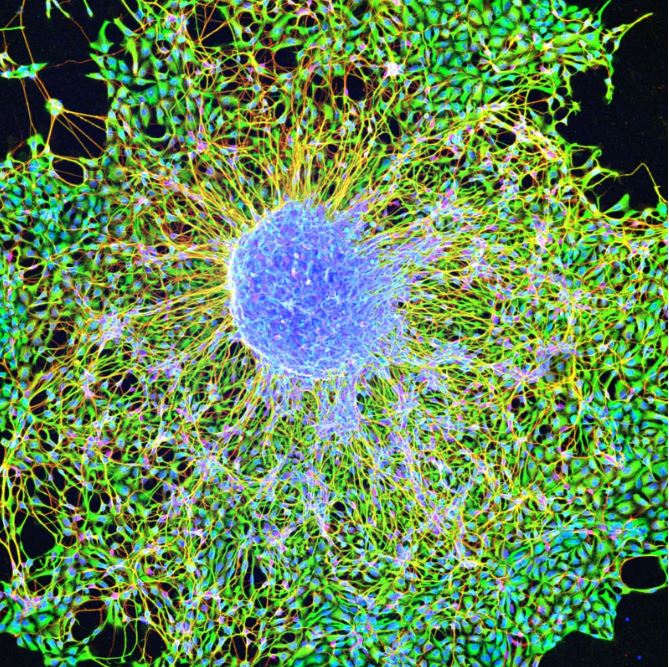I started reading about pluripotent stem cells when I wanted to write an article about dental pulp stem cells (DPSC).
A Journal claimed in late 2021 that dental pulp stem cells were traced in the third molars of adult humans.
The third molars are the flat teeth in the very back of the mouth. They are also known as wisdom teeth.
This article contains my research on pluripotent, totipotent, and multipotent stem cells.
Let us start with totipotency.

Totipotent Stem Cells
A single-cell embryo is a totipotent cell. This cell can produce many different types of cells. In other words, it can make all body cells, gradually creating an adult individual.
Features of totipotent cells
- They are species-specific. For example, human embryos will not mature into monkeys.
- They repair injuries.
- Since they plan to create what cells are needed for the body and how to organize them in ideal proportion, they are called an organism.
Pluripotent Stem Cells
Pluripotent stem cells can regenerate themselves. They can divide indefinitely and still not lose their initial characteristics. They descend from totipotent cells and can produce most cell types within the body.
Two types of pluripotent stem cells are:
- Embryonic stem cells. They are pluripotent stem cells with the unique ability to self-renewal
- Induced pluripotent stem cells. These types of cells are generated through genetic reprogramming. They are the immature cells generated from a mature cell capable of changing into any cell in the body. They can turn into neurons to treat neurological disorders.
Features of Pluripotent cells
- They can divide into most cell types of the body
- Still, they cannot mature into an adult, individual beings as totipotent cells can.
Multipotent Stem Cells
They can renew themselves by dividing and developing into different cell types within an organ. They can be found in bone marrow, heart tissues, and dental pulp.
Features of multipotent cells
- They can produce only the cells belonging to a closely related family. For example, a multipotent blood cell can mature only into a red blood cell, a white blood cell, or a cell with a special responsibility within the blood.
- Since they have to stay within their organ type, they are not as versatile as pluripotent stem cells.
Neural stem cells are multipotent stem cells.
If it all sounds complicated, let’s try the following.
Totipotent stem cells can mature into adult beings, while pluripotent stem cells can mature into all kinds of cells within the body; multipotent stem cells can develop into only a limited number of cells within a cell family.
Totipotent vs Pluripotent
- One of their main differences is that totipotent stem cells can mature into embryonic and extraembryonic cells, while pluripotent cells can only mature into embryonic cells.
- Totipotent cells show greater regeneration potential than pluripotent cells.
- Totipotent cells may not lose their inherent characteristics during their maturation process, while pluripotent cells may not show all their inherent characteristics. From complete pluripotent cells, they can turn into partially pluripotent cells.
Dental Pulp Stem Cells
Dental pulp stem cells are multipotent stem cells. They can help treat pulp infections and damaged nerves within the pulp chamber.
Academic investigations are on to see how they can regenerate facial bones, including the maxilla and the mandible.
Studies have proved that dental pulp stem cells multiply fast. They are also easily accessible, as doctors can collect them from their patients’ extracted teeth and ship them to the research lab within 72 hours.
Besides, stem cells collected from one tooth are enough to treat several teeth.
Sources
- Frontiers in Cell and Developmental Biology. “Dental Pulp Stem Cells Derived From Adult Human Third Molar Tooth: A Brief Review.” 2021; 9: 717624.
- Stem Cells and Development. “Totipotency: What It Is and What It Is Not.” 2014 Apr 15; 23(8): 796–812.
- Stem Cells International. “Pluripotent Stem Cells: Current Understanding and Future Directions.”
- Nature. “Embryonic stem cell and induced pluripotent stem cell: an epigenetic perspective.”
- ThermoFisher Scientific. “Hematopoiesis from Pluripotent Stem Cells.”
- Wikipedia. “Neural stem cell.”
- Technology Networks. “Cell Potency: Totipotent vs Pluripotent vs Multipotent Stem Cells.”
